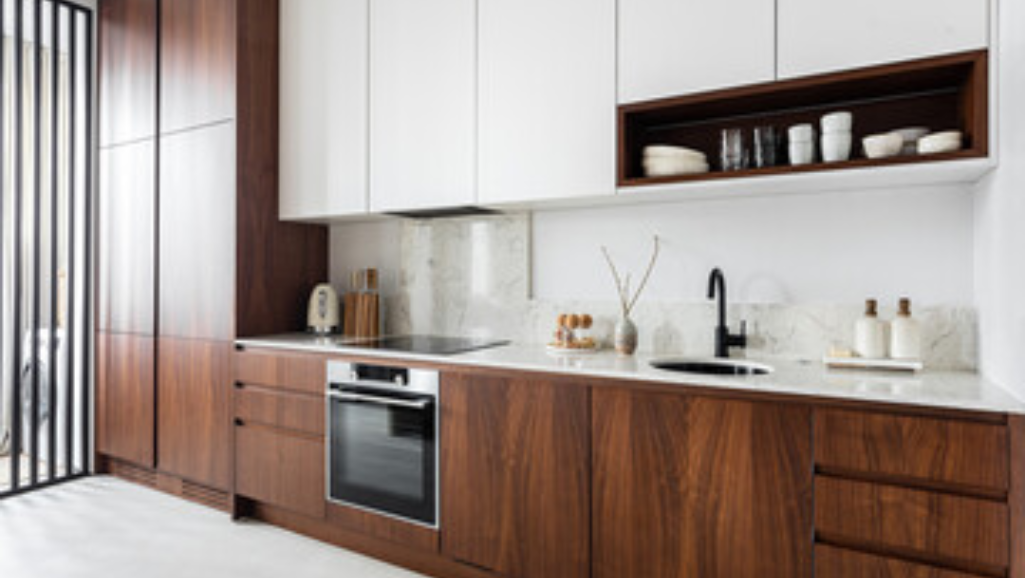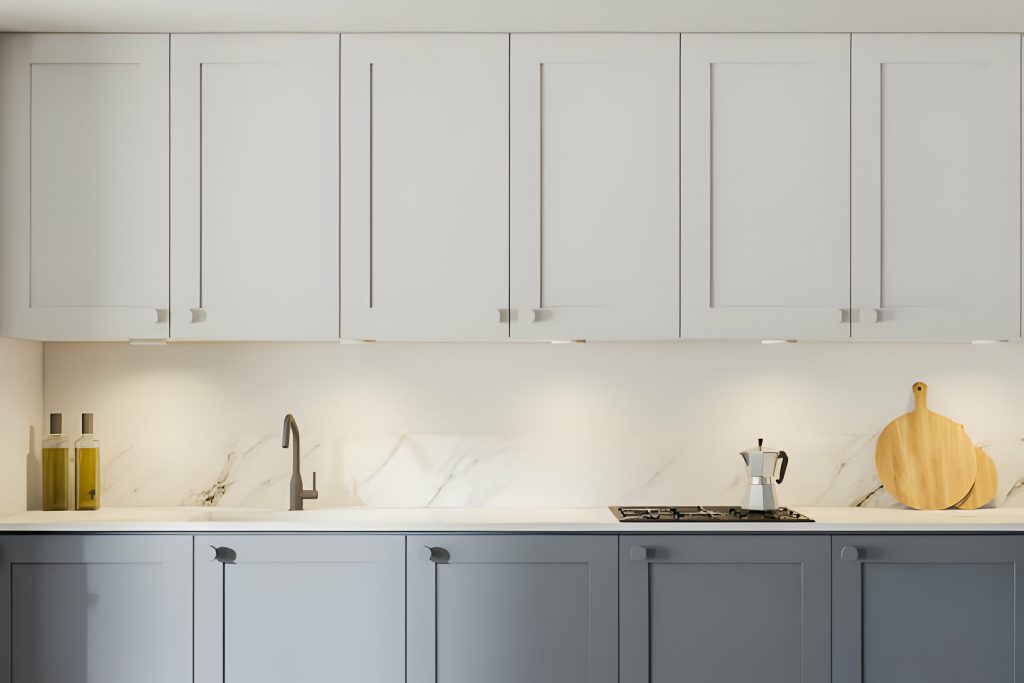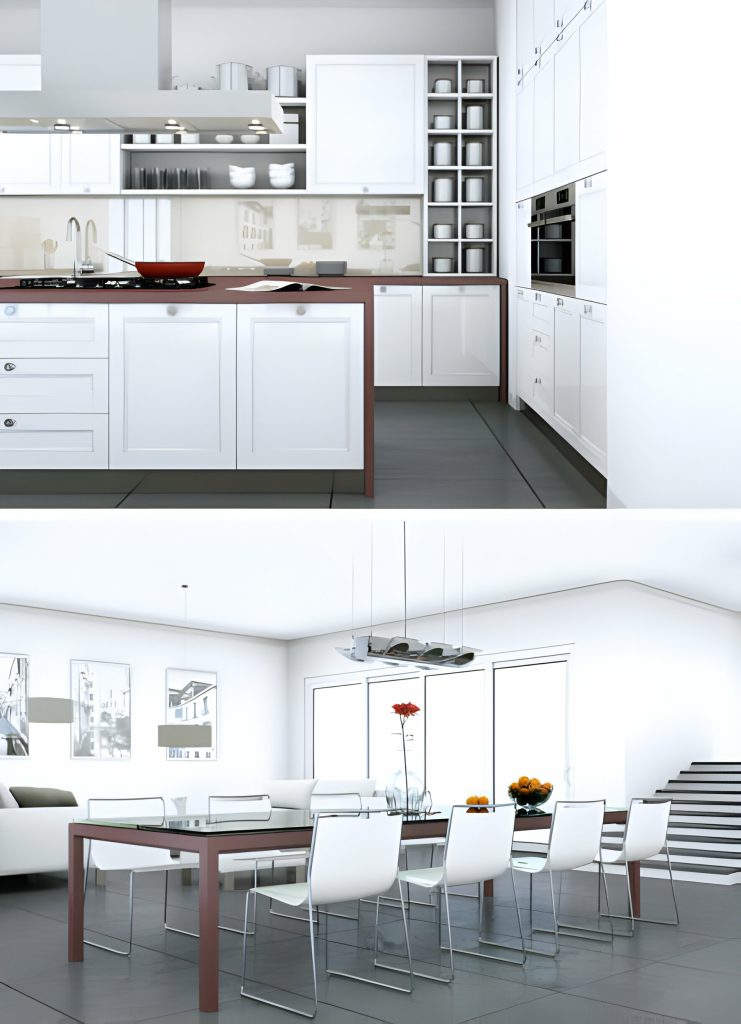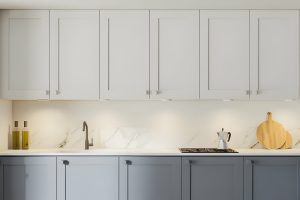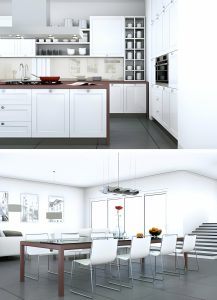Do you ever wonder why your white kitchen cabinet doors appear different from the sides of the cabinet? It’s not just your imagination playing tricks on you. Several factors contribute to this phenomenon, including lighting conditions, reflections, material and finish variation, aging and wear, as well as environmental factors. Understanding these factors can help you decipher the mysteries behind the inconsistent appearance of your cabinet doors, leading to a better understanding of how to maintain and clean them effectively.
Lighting and Reflections
If you’re wondering why your white kitchen cabinet doors appear different from the sides of the cabinet, it could be due to the effects of lighting and reflections. The type of lighting in your kitchen plays a crucial role in how your cabinet doors look. Natural lighting, which is sunlight, and artificial lighting, such as overhead lights or under-cabinet lighting, have different qualities that can affect the appearance of your cabinets.
Natural lighting tends to be more balanced and evenly distributed, providing a true representation of colors. This means that if you have white cabinet doors, they will likely appear the same from all angles. On the other hand, artificial lighting can sometimes create shadows or uneven lighting conditions, causing the cabinet doors to appear different from the sides. This is especially true if the lighting is not properly positioned or if there are obstructions blocking the light.
Another factor that can contribute to the difference in appearance is the type of finish on your cabinet doors. Glossy finishes are reflective and can amplify the effects of lighting and reflections. This means that under certain lighting conditions, the glossy cabinet doors may appear brighter or have more noticeable reflections compared to the sides. Matte finishes, on the other hand, are less reflective and tend to diffuse the light, resulting in a more consistent appearance from different angles.
Material and Finish Variation
When considering material and finish variation, it’s important to understand how different choices can contribute to the discrepancy in appearance between your white kitchen cabinet doors and the sides of the cabinet. The stain color and manufacturing process are two key factors that can affect the overall look of your cabinets.
Stain color plays a significant role in the final appearance of your cabinets. Different stains can create variations in color, depth, and intensity. Even if you choose the same white stain for both the doors and sides of your cabinets, there may still be slight variations due to the natural variations in the wood grain and how the stain is absorbed.
Additionally, the manufacturing process can also contribute to the differences in appearance. During the production of cabinet doors, a different finishing technique may be applied compared to the sides of the cabinet. This can result in variations in texture, sheen, and overall appearance.
To help illustrate the impact of material and finish variation, here is a table showcasing some common factors that can contribute to the difference in appearance between the doors and sides of your white kitchen cabinets:
| Factor | Doors | Sides |
|---|---|---|
| Stain Color | Pure White | Pure White or slightly different due to natural variations |
| Manufacturing Process | May involve additional finishing techniques | Standard finishing techniques applied |
Aging and Wear
As your white kitchen cabinet doors age and experience wear, you may notice a difference in their appearance compared to the sides of the cabinet. This discrepancy in color and texture is a natural result of aging and wear. Over time, the white color of your cabinet doors may start to fade due to exposure to sunlight and other environmental factors. This color fading can be more pronounced on the doors because they are constantly exposed to light, while the sides of the cabinet may be somewhat shielded. Additionally, the doors are more susceptible to wear and tear, such as scratches and dents, which can further contribute to their different appearance compared to the sides of the cabinet. These signs of natural aging and wear are unavoidable, but they can be minimized by taking proper care of your cabinet doors. Regular cleaning and maintenance, as well as using protective coatings or finishes, can help prolong the lifespan of your doors and maintain their original appearance.
Environmental Factors
To understand why your white kitchen cabinet doors look different from the sides of the cabinet, it is important to consider the impact of environmental factors on their appearance. The environment in which your kitchen cabinets are located can have a significant effect on the color and overall look of the doors. Here are three key factors to consider:
- Humidity levels: High humidity levels can cause the wood to expand and contract, leading to warping or cracking of the cabinet doors. This can result in uneven color distribution and a different appearance compared to the sides of the cabinet. It is important to maintain a consistent humidity level in your kitchen to minimize these effects.
- Exposure to sunlight: Sunlight can cause color fading over time. If your cabinet doors are exposed to direct sunlight, they may fade at a faster rate compared to the sides of the cabinet that are shielded from the sunlight. Consider using window treatments or applying a UV protective coating to prevent excessive fading.
- Airborne particles: Dust, grease, and other airborne particles can settle on the cabinet doors, leading to discoloration. Regular cleaning and maintenance can help prevent the accumulation of these particles and maintain the uniform appearance of your kitchen cabinets.
Maintenance and Cleaning
To maintain the uniform appearance of your white kitchen cabinet doors and ensure they match the sides of the cabinet, regularly clean and maintain them. Cleaning your white cabinet doors not only removes dirt and grime but also helps prevent color fading over time. Here are some effective cleaning techniques to keep your cabinet doors looking their best:
| Cleaning Technique | Steps |
|---|---|
| Mild Soap and Water | 1. Mix a mild dish soap with warm water. 2. Dip a soft cloth or sponge into the solution. 3. Gently scrub the cabinet doors, paying attention to any stains or marks. 4. Rinse with clean water and dry thoroughly. |
| Vinegar Solution | 1. Mix equal parts white vinegar and water in a spray bottle. 2. Spray the solution onto the cabinet doors. 3. Wipe with a soft cloth or sponge, using circular motions. 4. Rinse with clean water and dry thoroughly. |
| Baking Soda Paste | 1. Mix baking soda with water to form a paste. 2. Apply the paste to any stubborn stains or discoloration. 3. Gently scrub the affected areas with a soft cloth or sponge. 4. Rinse with clean water and dry thoroughly. |
